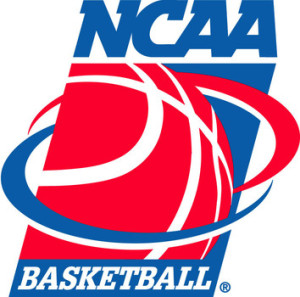College Basketball Handicapping – Major Conference Stats
Major Conference Stats to use at Tournament Time
During the course of the college basketball regular season, I often provide statistical parameters and profiles of teams in various categories. Previously I noted top defensive teams, and also looked at undefeated home teams and last home game situations and how to use the emotion of college basketball teams in conjunction with stats.
With the College Conference Tournaments starting for the major conferences this week, I thought I’d provide some stat profiles of the top teams in those conferences with many of those teams expected to play in the NCAA tournament starting next week at various sites around the country.
As the big conference tournaments begin, the latest Bracketology projections by Joe Lunardi at ESPN show the number of teams represented in the major conferences below.
Big 12 – 7…ACC – 6…Pac-12 – 6…Big Ten – 6…Big East – 5…SEC – 4
Of course, as upsets occur and perhaps an unexpected team makes it through to win the conference tournament and make the NCAA field, you’ll have to research and dig for additional stats on teams not provided below. Same for the one-bid leagues and smaller conferences.
So with 32 automatic bids to the big dance, there are 36 at-large bids distributed. Based on the bracketology projections, 28 of those will come from the power-6 conferences. The American (AAC) and Atlantic-10 are both projected to get at least three bids also.
In evaluating the conference tournaments and beyond, you may want to also look at the Basketball Power Index (BPI). The BPI is a team rating system that accounts for the final score, pace of play, site, strength of opponent and absence of key players in every Division I men’s game. BPI can be used to measure both how well a team has performed (going far beyond just wins and losses) and how powerful it is likely to be going forward.
Here are additional BPI Conference Tournament projections.
I’ve outlined in the chart below some of the key stats for the top teams in these conferences. These are season-long stats, but I personally look at conference stats only for some of my handicapping during the conference regular season.
 Use these stats as a guide in the conference tournament match-ups, NCAA tournament and other postseason tournaments. Clearly there is more to evaluate in our pursuit of profit in point spread prognosis. The one-and-done formats have various levels of motivation during conference tournament play, as the small conferences only get one-bid to the NCAA tournament and lay it all on the line. More upsets often occur, as teams like Austin Peay won four-straight games as underdog to advance to the NCAA Tournament from the Ohio Valley despite entering the tournament with a sub-.500 overall record.
Use these stats as a guide in the conference tournament match-ups, NCAA tournament and other postseason tournaments. Clearly there is more to evaluate in our pursuit of profit in point spread prognosis. The one-and-done formats have various levels of motivation during conference tournament play, as the small conferences only get one-bid to the NCAA tournament and lay it all on the line. More upsets often occur, as teams like Austin Peay won four-straight games as underdog to advance to the NCAA Tournament from the Ohio Valley despite entering the tournament with a sub-.500 overall record.
Horizon League champion Valparaiso was knocked off in overtime by Green Bay to end their NCAA Tournament hopes, while dominant Missouri Valley champion Wichita State was taken out by Northern Iowa and must now wait to see if the selection committee includes them in the NCAA Tournament field of 68 (they should, but likely a first four game). Emotion plays a bigger part in these one-bid leagues and smaller conferences than the stat profiles as the pressure mounts to make the big dance.
Meanwhile, match-ups like No. 4 and No. 5 seeds Texas and Baylor in the Big 12 tourney have less at stake with both teams going to the big dance and neither able to improve on their NCAA tournament seed whether they win or lose this one game. Only a Big 12 tournament title moves them up one spot to perhaps to a No. 5 seed in the NCAA tournament.
But the stats can at least provide some of the pieces in determining which teams play good fundamental basketball and excel in certain key categories.
Additional stats of teams can be found on these links for free throw shooting, steals, made 3-pointers per game and much more.
Plenty of NCAA Tournament ‘bubble’ teams and here’s a look at which teams have work to do as the big conferences start tourney play.
As you continue to evaluate offensive and defensive stats and try to interpret the data and project performance, be sure you evaluate current form but also understand the impact of such on the adjusted betting line. We see over and over some teams sweeping a season series from an opponent, only to lose in the conference tournament as a favorite (like our play on Oakland -6 over Wright State in the Horizon semifinals).
Many bettors fall in love with the attractive, highly-ranked hotties more than the hard-trying ugly ‘Dog, and the linemaker knows which you prefer. Thus, the price to pay is often not worth the risk, especially on a neutral court. We took advantage of such with our outright underdog winner on Fairleigh Dickinson (+9′) in their 87-79 win over top-seed Wagner in the Northeast conference championship game to send the Knights to the NCAA Tournament.
I hope you find these stats useful as you analyze the match-ups in the remaining postseason tournaments. If you don’t have the time, energy or ability to consistently beat the bookmaker, then get on my bag and join me for the remaining tournaments including the Big Dance, and we’ll win together.
For simplicity and ease of use, I’ve rounded some stats to whole numbers.
FG = Field Goal, PPG – Points Per Game, OFF = Offense, DEF = Defense, REB = Rebounding Margin, Ass/TO = Assist/Turnover Ratio
RPI – Ranking of the Ratings Percentage Index. 50% of a team’s RPI number is that team’s OPPONENTS Division-1 won/loss record or their strength of schedule (SOS). 25% of the rating comes from a team’s Division-1 won/loss record, and the final 25% is a measurement of a team’s OPPONENTS opponent’s SOS. Got it? Let the computers figure it out.
| Conference | Team | FG% | Def FG% | 3-pt Off/Def | Off/Def PPG | Reb | Ass/TO
|
RPI |
| ACC | No.Carolina | 47.6 | 41.3 | 31/36 | 83/71 | +8.6 | 1.7 | 9 |
| ACC | Virginia | 48.9 | 41.6 | 41/34’ | 71/60 | +3.7 | 1.5 | 2 |
| ACC | Miami | 47.2 | 42.5 | 36/34 | 75/66 | +2.7 | 1.2 | 7 |
| ACC | Duke | 46.1 | 44.0 | 39/33’ | 81/71 | +0.0 | 1.3 | 18 |
| ACC | NotreDame | 47.5 | 43.1 | 37/38 | 76/70 | +2.9 | 1.5 | 36 |
| ACC | Clemson | 43.5 | 41.8 | 35/35 | 69/64 | +0.9 | 1.3 | |
| ACC | Pittsburgh | 45.9 | 43.0 | 34’/35 | 76/67 | +8.1 | 1.5 | 56 |
| Big 12 | Kansas | 49.2 | 39.7 | 43/33 | 82/68 | +4.9 | 1.3 | 1 |
| Big 12 | W. Virginia | 45.1 | 42.6 | 32/32 | 80/66 | +8.9 | 1.1 | 10 |
| Big 12 | Oklahoma | 45.8 | 40.3 | 43/33’ | 81/70 | +2.8 | 1.2 | 5 |
| Big 12 | Texas | 43.3 | 41.8 | 34/34’ | 72/68 | -0.9 | 1.1 | 23 |
| Big 12 | Baylor | 47.0 | 44.6 | 37/37 | 78/70 | +8.2 | 1.4 | 27 |
| Big 12 | Iowa State | 50.3 | 43.5 | 38/34 | 82/75 | -0.3 | 1.5 | 20 |
| Big 12 | Texas Tech | 44.9 | 42.7 | 35/35 | 73/70 | +0.4 | 1.1 | 26 |
| Big Ten | Indiana | 50.2 | 44.1 | 42/34’ | 83/69 | +7.1 | 1.2 | 19 |
| Big Ten | Michigan St | 48.8 | 37.7 | 44/30’ | 81/64 | +11.9 | 1.8 | 14 |
| Big Ten | Maryland | 48.9 | 40.5 | 36’/31’ | 76/66 | +3.6 | 1.1 | 12 |
| Big Ten | Purdue | 46.9 | 39.1 | 37/32 | 78/65 | +10.9 | 1.4 | 16 |
| Big Ten | Iowa | 45.2 | 41.3 | 38/30’ | 79/70 | +1.1 | 1.6 | 24 |
| Big Ten | Wisconsin | 43.4 | 42.8 | 36/38 | 69/65 | +3.4 | 1.1 | 32 |
| Pac-12 | Oregon | 46.6 | 42.6 | 34/36 | 78/68’ | +3.2 | 1.2 | 4 |
| Pac-12 | Utah | 48.9 | 40.9 | 36/36’ | 78/68 | +5.0 | 1.3 | 8 |
| Pac-12 | Arizona | 48.6 | 41.4 | 38/31’ | 81/68 | +9.9 | 1.2 | 25 |
| Pac-12 | California | 46.3 | 39.1 | 37/34’ | 75/66’ | +7.2 | 1.1 | 15 |
| Pac-12 | Colorado | 42.8 | 42.0 | 39’/35’ | 76/71 | +8.6 | 1.0 | 29 |
| Pac-12 | USC | 45.8 | 41.4 | 38/32 | 81/75 | +1.1 | 1.2 | 45 |
| Big East | Villanova | 46.7 | 39.6 | 33’/33’ | 77/63 | +2.1 | 1.5 | 3 |
| Big East | Xavier | 45.4 | 41.4 | 36’/31’ | 81/71 | +7.5 | 1.3 | 6 |
| Big East | Seton Hall | 44.5 | 40.2 | 35/31’ | 74/67 | +3.0 | 1.0 | 33 |
| Big East | Providence | 41.7 | 43.4 | 31’/31 | 74/70 | +0.2 | 1.4 | 44 |
| Big East | Butler | 46.9 | 42.7 | 38/33’ | 81/71 | +3.5 | 1.4 | 46 |
| SEC | Texas A&M | 45.3 | 41.1 | 35’/33’ | 76/66 | +3.7 | 1.5 | 22 |
| SEC | Kentucky | 47.6 | 39.7 | 36/33 | 79/68 | +6.0 | 1.3 | 13 |
| SEC | So.Carolina | 42.8 | 39.5 | 35/35 | 76/69 | +6.8 | 1.0 | 52 |
| SEC | Vanderbilt | 46.1 | 38.6 | 39/29 | 77/67’ | +1.3 | 1.3 | 49 |

 Twitter
Twitter Facebook
Facebook